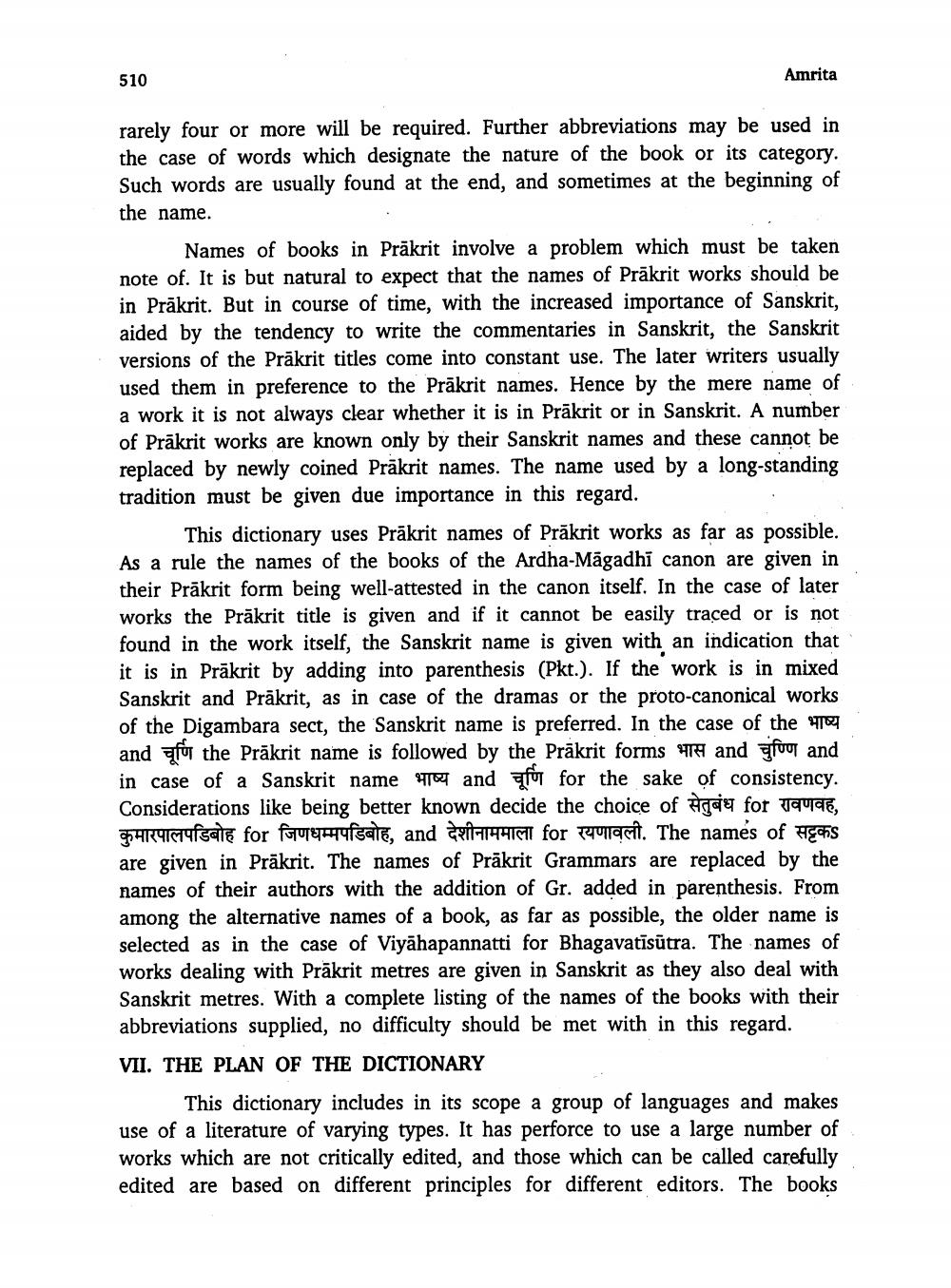________________
510
Amrita
rarely four or more will be required. Further abbreviations may be used in the case of words which designate the nature of the book or its category. Such words are usually found at the end, and sometimes at the beginning of the name.
Names of books in Präkrit involve a problem which must be taken note of. It is but natural to expect that the names of Prākrit works should be in Prākrit. But in course of time, with the increased importance of Sanskrit, aided by the tendency to write the commentaries in Sanskrit, the Sanskrit versions of the Prākrit titles come into constant use. The later writers usually used them in preference to the Prākrit names. Hence by the mere name of a work it is not always clear whether it is in Prākrit or in Sanskrit. A number of Prākrit works are known only by their Sanskrit names and these cannot be replaced by newly coined Prakrit names. The name used by a long-standing tradition must be given due importance in this regard.
This dictionary uses Prākrit names of Prākrit works as far as possible. As a rule the names of the books of the Ardha-Māgadhi canon are given in their Prākrit form being well-attested in the canon itself. In the case of later works the Prākrit title is given and if it cannot be easily traced or is not found in the work itself, the Sanskrit name is given with an indication that it is in Prākrit by adding into parenthesis (Pkt.). If the work is in mixed Sanskrit and Prākrit, as in case of the dramas or the proto-canonical works of the Digambara sect, the Sanskrit name is preferred. In the case of the 410 and for the Präkrit name is followed by the Prākrit forms 4 and four and in case of a Sanskrit name you and for for the sake of consistency Considerations like being better known decide the choice of सेतुबंध for रावणवह, 964141414fsate for futufae, and 0-14IMI for it. The names of HEAS are given in Prākrit. The names of Prākrit Grammars are replaced by the names of their authors with the addition of Gr. added in parenthesis. From among the alternative names of a book, as far as possible, the older name is selected as in the case of Viyāhapannatti for Bhagavatīsūtra. The names of works dealing with Prākrit metres are given in Sanskrit as they also deal with Sanskrit metres. With a complete listing of the names of the books with their abbreviations supplied, no difficulty should be met with in this regard. VII. THE PLAN OF THE DICTIONARY
This dictionary includes in its scope a group of languages and makes use of a literature of varying types. It has perforce to use a large number of works which are not critically edited, and those which can be called carefully edited are based on different principles for different editors. The books




